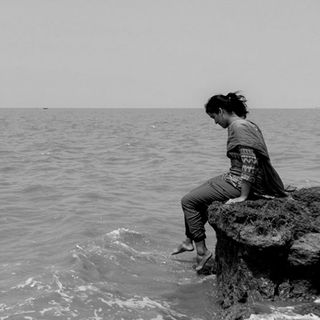Imagine middle-aged women and 10-year-old girls practicing kicking and punching in unison: Kangazha village in Kottayam aims to have all 9,800 of its women, aged 10 to 60, trained in self-defense by mid-December. Funded by the Nirbhaya scheme, the project teaches women how to react to various types of assault, from molestation on public transport to domestic abuse. Along with learning how to defend themselves against an attacker, the women also learn what actions are criminal under the law and how they can report these crimes.
Self-defense classes for girls and women have been on the rise, from the Karnataka State Police initiative, which trains girls in schools and colleges, to female Jain monks in Surat, who are learning to defend themselves against sexual assault, despite their pledge of non-violence, one of their religion’s tenets. Things have got to be pretty bad if monks who literally won’t hurt a fly are practicing with lathis.
While these initiatives are great, in that they’re enabling women to feel empowered, be physically active and occupy public space confidently, we have to ask — why are we placing the burden of women’s safety on women?
It’s evidence of a broader, fundamental flaw in how we’re addressing women’s safety. If the solution to violence against women is to arm women with the strength and skills to fight attackers off, the implication is that violence against women is a problem only women should care about or attempt to fight. The implication is that a woman doesn’t know how to fight back, well, she’s partially to blame, then, for not being prepared enough against her assault. And if something violent happens to a woman who has self-defense training, it’s because she didn’t defend herself well enough.
This is not that far from pinning the blame of an assault on the survivor for something she’s wearing, or something she said.
The only people responsible for assault are assaulters. But the messaging that these kind of classes send to young girls and women is that assault is inevitable, harassment is inevitable, perhaps even rape is inevitable. So arm yourself, defend yourself, and maybe you’ll have a chance. And if you don’t, if something happens, it might be your fault for not being able to fight back.
In the real world, where we aren’t going to solve the problem of sexual harassment and assault anytime soon, perhaps these classes are a necessity for women. But let’s not forget that we also need initiatives that teach young boys and men about consent and desire; we need holistic sex education curricula in schools; we need to teach people how to help and stand up to violence against women if they see it. Instead of trying to literally fight against sexual assault, we need to prevent it from happening in the first place.




